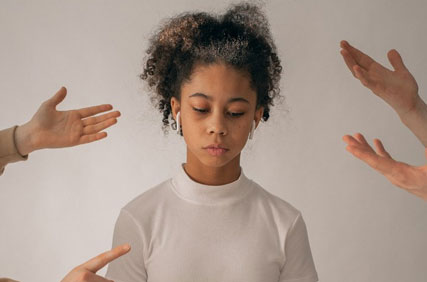Mental health is not just an adult issue, it’s a human issue that starts young and shapes how we learn, grow, and connect with the world. Yet for decades, schools have focused on grades, tests, and rules, while one of the biggest influences on a student’s success, their mental well-being, was overlooked, whispered about, or ignored altogether.
Today, the conversation is changing. Parents, teachers, and communities are beginning to understand that educating children means supporting the whole child, inside and out. Still, stigma remains one of the biggest barriers. At Amazine Amazon Inc., we know breaking that stigma early can save lives, and we’re working every day to make sure no student feels alone.
Why Mental Health Education Belongs in Schools
Schools shape our children’s minds, but they also shape their sense of self, belonging, and safety. From elementary classrooms to high school hallways, students carry more than just backpacks. They carry silent worries about fitting in, family stress, body image, anxiety about grades, or trauma they don’t have words for.
A 2023 report by the CDC found that more than 40% of high school students felt persistently sad or hopeless. One in five seriously considered suicide. These numbers are more than statistics, they’re urgent calls for change.
Mental health education is the first line of defense. By teaching students how to understand, talk about, and care for their mental well-being, we break the silence that isolates them. We help kids spot the signs when they, or their friends, need help. And we teach them that asking for help is never weakness, but strength.
How Schools Can Lead the Change
Breaking stigma doesn’t mean adding one mental health day to the school calendar and calling it done. It means weaving mental health awareness into the daily fabric of learning, through policies, lessons, and everyday interactions.
Here are some real ways schools can make a difference:
Teach It Like Any Other Subject
Mental health should not be treated like an optional afterthought. Just as students learn math or science, they can learn about stress, emotions, healthy coping, and how the brain responds to challenges. Age-appropriate lessons help normalize these conversations.
Train Teachers and Staff
Teachers are often the first to see when a child’s behavior changes , maybe they’re withdrawing, acting out, or falling behind. But too many teachers feel unequipped to respond. Schools that invest in mental health training for teachers empower them to spot warning signs, listen with compassion, and connect students to help early.
Create Safe, Supportive Spaces
Every student should know there’s somewhere to go when life feels heavy. From trusted counselors and peer support groups to quiet wellness corners in classrooms, safe spaces reduce fear and make help feel accessible.
Involve Families and Caregivers
Parents and guardians are crucial partners in mental health education. Schools can host workshops or family nights to teach caregivers how to talk to their children about feelings and stress. When families feel confident, kids feel safer opening up.
Why Stigma Is Still So Hard to Break
Even in 2025, mental health carries shame for many families and cultures. Some parents worry that talking about depression or anxiety might “put ideas” into kids’ heads. Others fear judgment from relatives or the community if they admit their child needs help.
Education changes that. When kids learn that mental health is part of overall health , just like eating well or staying active , they see asking for help as normal, not shameful. When families hear the same message at school, stigma starts to crack.
How Amazine Amazon Inc. Makes a Difference
Through Amazine Educators, we equip teachers with training and materials to bring mental health into the classroom confidently. Our S.O.C.K.S. program reminds students facing housing or family instability that they are cared for, that warmth and compassion are basic rights, not luxuries.
Each pair of socks donated, each classroom supplied, each conversation started is a step toward a culture where mental wellness is as routine as homework.
What’s Next: Our Vision for Tomorrow’s Schools
We dream of schools where every student can say, “It’s okay to not be okay.” We envision more teachers trained in trauma-informed care. More parents talking to their kids about feelings around the dinner table. More students looking out for one another instead of suffering alone.
We know this vision won’t come from a single workshop or fundraiser. It takes an entire community, schools, families, nonprofits, neighbors, working together to say: No more shame. No more silence.
How You Can Help Break the Stigma
Donate: Your support helps us expand workshops, supply classrooms, and train more educators.
Volunteer: Join us at school events or community drives to spread awareness and kindness.
Talk About It: Share this blog. Start a conversation at your child’s school. Ask teachers what they need to support students’ mental wellness.
Closing Words
Breaking the stigma around mental health in schools is not just an education issue, it’s a community responsibility. Every child deserves to feel safe, seen, and supported when life gets hard.
At Amazine Amazon Inc., we believe the strongest communities are built by lifting up the most vulnerable. Together, let’s build schools that heal, not just teach, so every student can learn, grow, and dream without fear or shame.
Want to help break the stigma? Visit Amazine Amazon Inc. to learn how you can donate, volunteer, or spread the message today.




